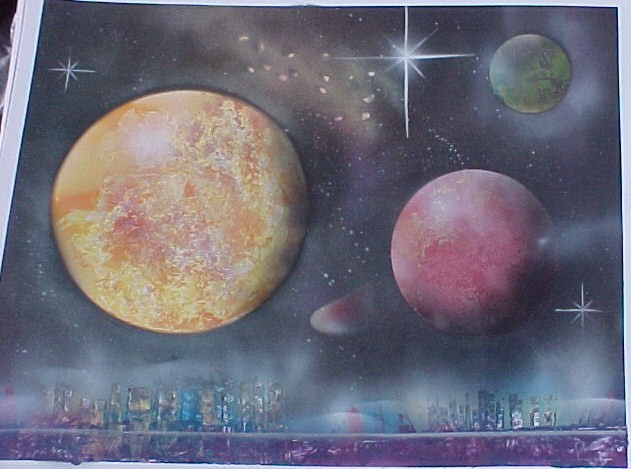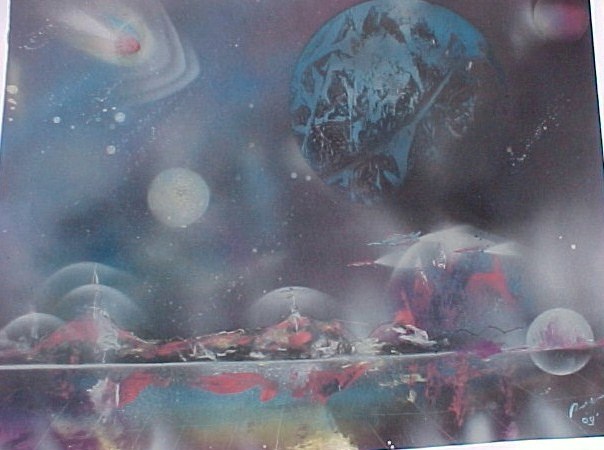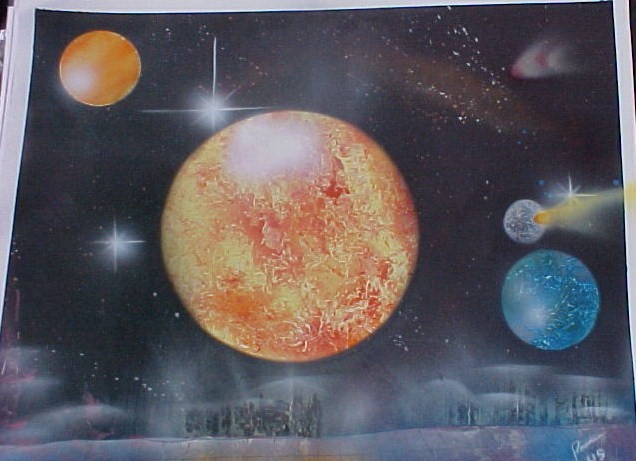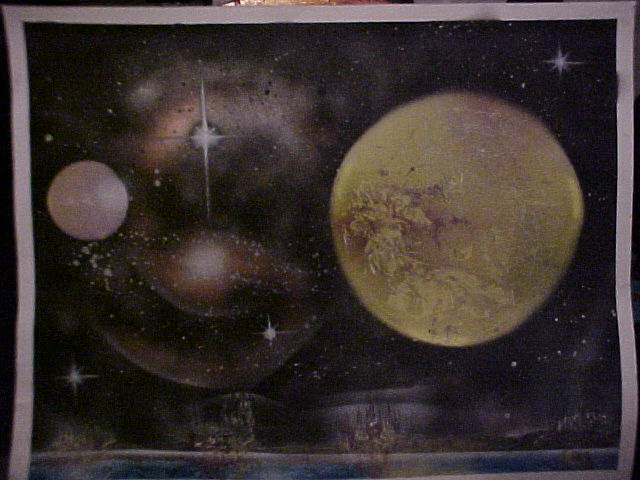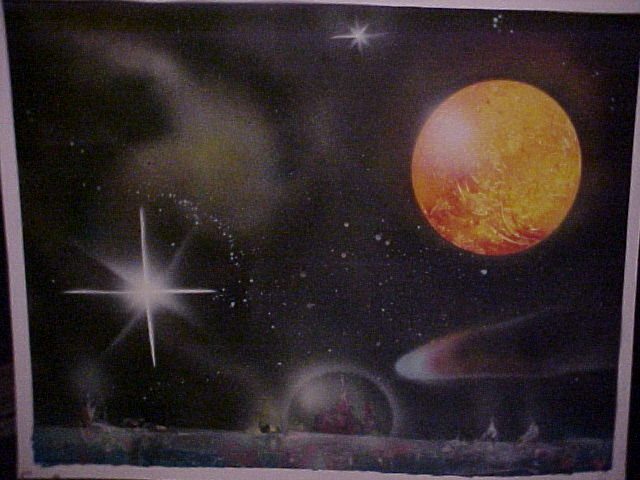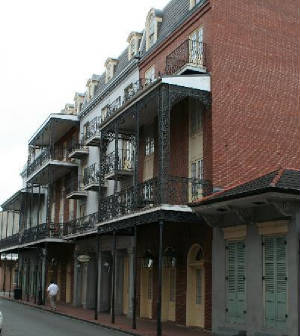| Home | Space Art | LGAA | Oil Paintings | Photos | P. 2 | Line Art | Water Colors | Artist Bio | Art Auction | |||||||||||||||||||||||||||||||||||||||||||||||||||||||||||||||||||||||||||||||||||||||||||||||||||||||||||||||||||||||||||||||
|
Space Art
|
|||||||||||||||||||||||||||||||||||||||||||||||||||||||||||||||||||||||||||||||||||||||||||||||||||||||||||||||||||||||||||||||
|
Many other events occurred within the next months, such as a reception and exhibit at a fancy hotel downtown—the
first major show in a commercial gallery, and a tribute exhibit underwritten by the country’s ruling political party,
the Partido Revolucionario Institucional (PRI), which is ironic since Sadot and most of the spray can artists were anti-PRI.
The famous Mexico City artist Felipe Ehrenberg, who had been using spray paint in his non-traditional art forms for years,
asked to join AMPA, dramatically raising the profile of the organization. However, despite positive media attention and growing support for the art, the economy was still in bad shape.
Luis (El Mexican) was the first to paint in the U.S. after Montero and he stayed in Los Angeles for a number of years, teaching
others who then fanned across the U.S., among them a talented young Mexican named Ricardo Ponce, considered by some experts
to be the most technically gifted spray artist in the world. Ponce lives and works in New Orleans. Montero ended up staying in the United States after going see The Who in Houston. In 1989 he settled
in New Orleans where he was offered a job teaching Spanish in the public schools. He lived there for many years and his reputation
as an artist grew. At the peak of Montero’s popularity he was voted one of the "40 Under 40 People to Watch,"
had shows at the New Orleans Contemporary Arts Center and the Smithsonian in Washington DC, collaborated with MTV, and was
invited to be a celebrity judge at the Hawaiian Tropic beauty contest in Honolulu. He painted fine art for gallery shows while
continuing to paint on the street where he teamed up with Ponce for about five years. A journalist writing an article about
Montero in New Orleans dubbed him CanGogh and the nickname stuck. |
|||||||||||||||||||||||||||||||||||||||||||||||||||||||||||||||||||||||||||||||||||||||||||||||||||||||||||||||||||||||||||||||
|
|||||||||||||||||||||||||||||||||||||||||||||||||||||||||||||||||||||||||||||||||||||||||||||||||||||||||||||||||||||||||||||||


